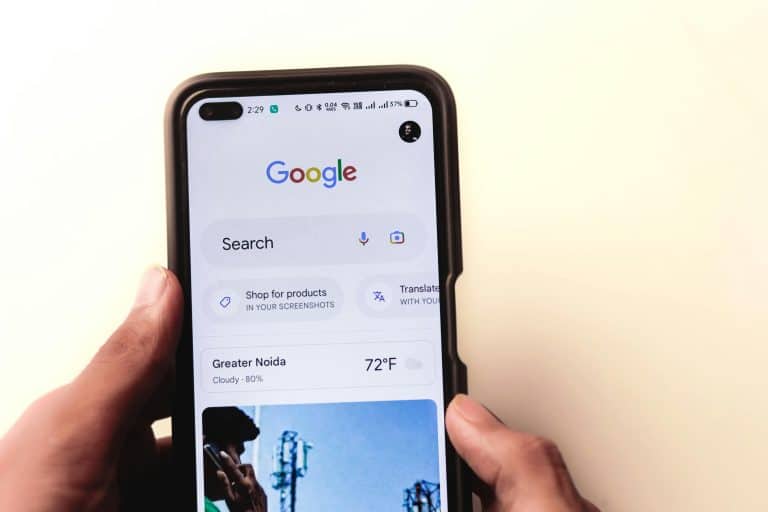Your website has seconds to impress—or lose—a potential customer. With 10,500 websites launched every hour, standing out isn’t optional. Users take just 0.05 seconds to judge a website, and 94% of that first impression is design-related. Worse, 88% of visitors won’t return after a poor experience. If your site isn’t visually appealing, fast, and easy to use, you’re driving customers straight to your competitors.
DIY website builders may seem convenient, but they often lack customization, strategy, and long-term scalability. A professional web design company does more than make your site look good—it ensures brand consistency, user-friendly navigation, and SEO optimization to attract and convert visitors.
In this article, you’ll discover what web design companies really do, how they impact branding, visibility, and conversions, and why investing in expert web design can be a game-changer for your business.
What Does a Web Design Company Do?
The goal of top web design agencies is to build strategic, high-performing digital experiences that drive business growth. Unlike DIY website builders, professional web design focuses on branding, user experience (UX), and functionality, ensuring that every element aligns with a company’s goals.
The Core Purpose of a Web Design Company
At its core, a web design company aims to:
- Create visually appealing, user-friendly websites that capture attention and keep visitors engaged.
- Enhance functionality with features like mobile responsiveness, fast loading speeds, and clear navigation.
- Boost business growth by integrating SEO, lead generation tools, and conversion-focused design.
Beyond Aesthetics: How Web Design Impacts Business Growth
Think of your website as your hardest-working sales rep, available 24/7. It directly affects credibility, customer retention, and revenue. A poorly designed website can drive customers away, while a well-structured one can increase engagement and sales.
Professional web development services include:
- Custom coding & integrations: Ensuring the site is tailored to business needs.
- SEO optimization: Improving visibility on search engines.
- E-commerce functionality: Creating seamless online shopping experiences.
- Security enhancements: Protecting user data and ensuring site stability.
A well-designed website isn’t just an online presence—it’s a powerful business tool that strengthens branding and drives conversions.
Core Services of a Web Design Company
Here’s a breakdown of the core services that shape a high-quality website.
Website Strategy & Planning
Before designing a website, a web design company conducts market research to understand the industry, competition, and audience. This phase includes:
- Business goal alignment: Defining what success looks like for the website.
- User journey mapping: Structuring the site to guide visitors seamlessly.
- Wireframing: Outlining the site’s structure before development begins.
UI/UX Design: Enhancing User Experience
User experience (UX) determines how visitors interact with a site, while user interface (UI) focuses on its look and feel. Effective UI/UX design ensures:
- Responsive website design and mobile-friendly layouts for seamless browsing on all devices.
- Intuitive navigation to keep users engaged.
- Visually compelling designs that reinforce brand identity.
Branding Integration & Custom Web Design
A professional web design company ensures the website reflects the brand’s personality. This includes:
- Custom design vs. templates: Tailored designs provide a unique brand experience.
- Brand consistency: Fonts, colors, and imagery align with brand identity.
- Emotional connection: Design choices influence customer perception.
Web Development & Coding
Behind the scenes, clean and efficient coding powers the website. This involves:
- Front-end & back-end development: Using HTML, CSS, JavaScript, and CMS platforms.
- Custom vs. CMS-based sites: Choosing between a fully coded solution or platforms like WordPress and Shopify.
- SEO-friendly code: Ensuring search engines can index and rank the site.
Search Engine Optimization (SEO) for Websites
An SEO-optimized website improves visibility and attracts organic traffic. This includes:
- Mobile optimization: Ensuring a seamless experience across devices.
- Page speed enhancements: Faster load times reduce bounce rates.
- Technical SEO: Optimized metadata, structured data, and clean site architecture.
Mobile Responsiveness & Cross-Browser Compatibility
Since most users browse on mobile, responsive design is non-negotiable. A web design company ensures:
- Adaptive layouts that adjust to any screen size.
- Cross-browser testing for functionality across Chrome, Safari, and Firefox.
- Fast-loading, touch-friendly interfaces for a better user experience.
E-Commerce Website Development
For businesses selling online, an e-commerce-ready website is essential. This involves:
- Payment gateway integration for secure transactions.
- Product catalog setup with user-friendly search and filtering options.
- Security measures to protect sensitive customer data.
Website Security & Maintenance
A website is an ongoing investment that requires maintenance and protection. Web design companies offer:
- SSL certificates & encryption to secure customer data.
- Regular updates & monitoring to ensure performance and uptime.
- Cybersecurity defenses against malware and hacking threats.
Each of these services plays a role in building, optimizing, and securing a website that doesn’t just look great—but also drives results, engagement, and business growth.
At Pascual Creative, we don’t just design websites—we craft strategic, conversion-driven experiences tailored to your business goals. If you’re looking for a team that blends stunning design with smart functionality, let’s talk.
The Web Design Process: From Idea to Launch
A great website isn’t built overnight. It takes a meticulous, well-planned process to create something that’s not just visually stunning but also functional, user-friendly, and designed to grow with your business.
1. Initial Consultation & Goal Setting
Every successful website starts with a deep dive into the business, audience, and objectives. In this phase, a web design company identifies business goals and target users. They will also define the project scope, timeline, and deliverables to set clear expectations.
2. Wireframing & Prototyping
Before coding begins, designers create a blueprint of the site’s layout and functionality. This involves wireframing to map out the user journey and page structure. They will also use tools like Adobe XD, Figma, or Sketch to create interactive prototypes.
3. Design & Development
Once the structure is set, the real work begins:
- Custom design elements are applied, aligning visuals with branding.
- Developers integrate coding, content, and interactive features.
4. Testing & Quality Assurance
Before launch, everything is tested to ensure a seamless experience. For one, the agency will check for cross-browser compatibility and ensure the site works on Chrome, Safari, and Edge. Plus, page speed, mobile responsiveness, and broken links are checked and fixed.
5. Website Launch & Post-Launch Support
Once the site is ready, it’s time to go live. Final steps include SEO optimizations to improve visibility as well as training business owners on site updates and maintenance to ensure long-term success.
Each phase is designed to create a high-performing, user-friendly website that supports business growth.

How a Web Design Company Impacts Business Success
What does a web design company do? It builds websites with strategy, user experience, and SEO at the core. The result? A platform that attracts visitors, builds trust, and drives measurable growth.
Credibility and Conversions
First impressions matter. A polished, professionally designed website instills trust and makes potential customers more likely to engage. Clear navigation, compelling visuals, and strategic call-to-action (CTA) placement guide visitors toward conversions, whether that’s a purchase, a booking, or a lead inquiry.
Better User Experience, Lower Bounce Rates
A slow, clunky website sends users away. A strong user experience (UX) design ensures fast load times, intuitive navigation, and mobile responsiveness, keeping visitors engaged and reducing bounce rates.
SEO-Friendly Website Design for Organic Growth
An SEO-optimized site doesn’t just look good—it ranks higher in Google searches, attracts organic traffic, and increases visibility. With structured content, fast performance, and mobile optimization, a web design company ensures your website works for you 24/7.
Conclusion
A well-designed website is a powerful business tool that shapes customer perception, drives conversions, and supports long-term growth. From strategy and UX to SEO and security, a web design company ensures every element works together to create a seamless, high-performing digital experience.
Let your website be your brand’s best storyteller. Pascual Creative builds sites that work hard and look good doing it. Ready to bring yours to life? Let’s chat!



